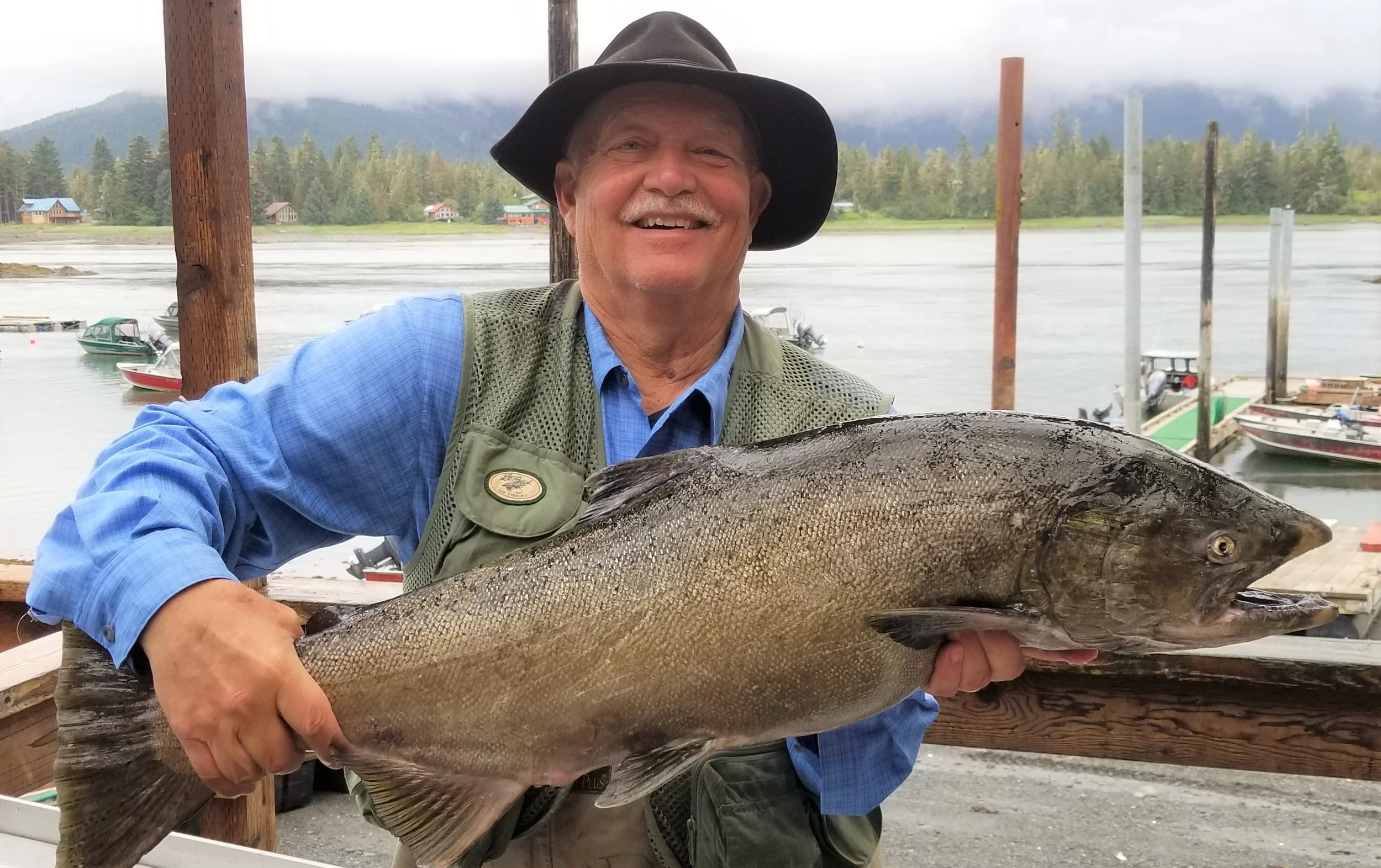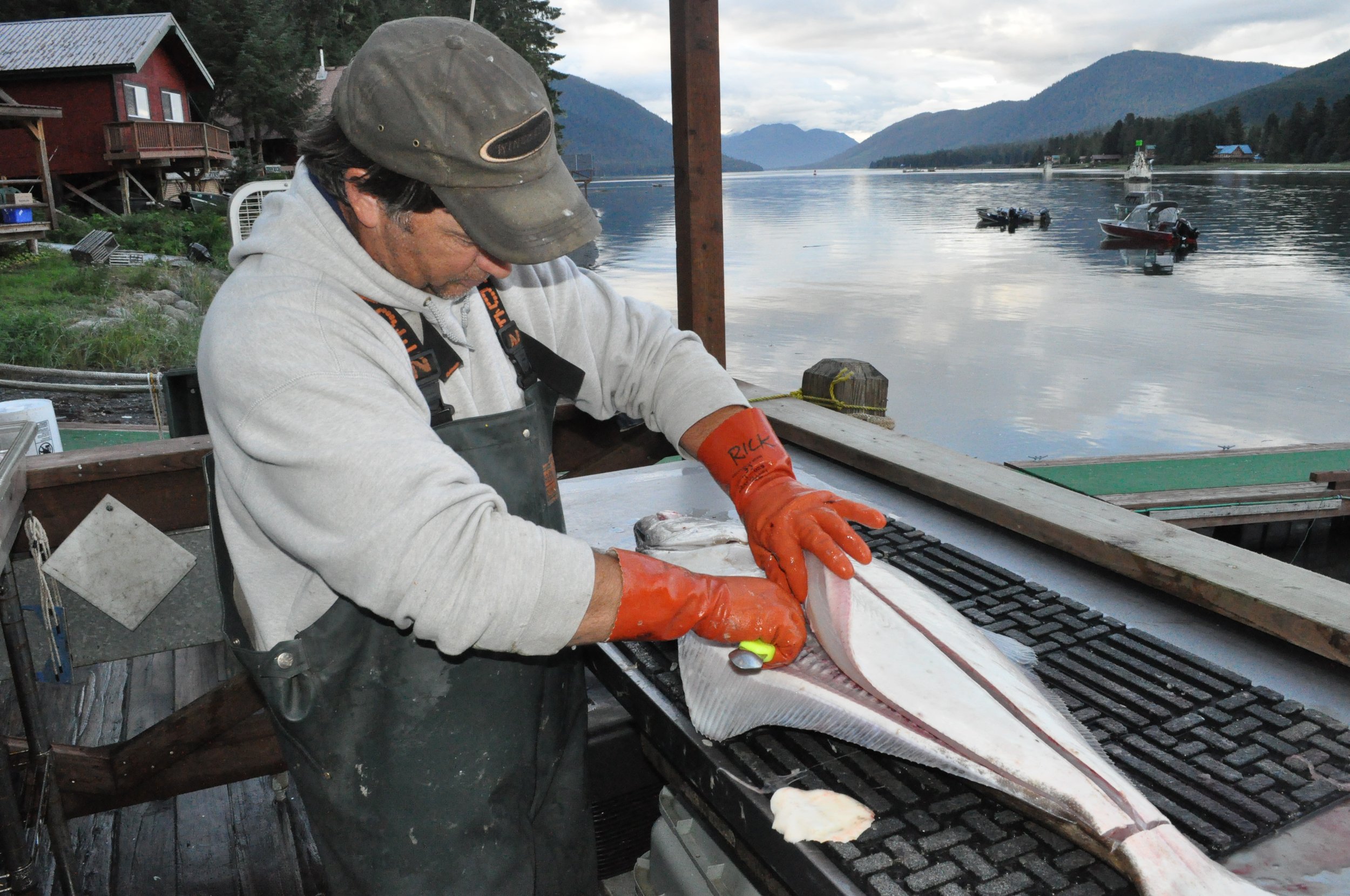Alaskan King Quest: Landing a Chinook Salmon
Catching an Alaskan king salmon is like landing a tarpon you can eat. Most of Alaska allows non-residents to catch one or two kings in a season, but the Blind Slough fishery near Petersburg allows four per day. Here’s where and how to conquer the king with stick, fly, and string.
Catching and landing a chinook (king) salmon is an incredible challenge. My first success occurred on the Alaskan Peninsula, an adventure that took three airplane flights just to get there. Guide and outfitter Butch King tied and offered his Wildman fly and coached me through the battle. I ultimately landed 15 pounds of silvery succulence and made a lifetime memory.
For the past 20 years, I’ve taken a much simpler approach, fishing the Blind Slough just south of Petersburg Alaska, a small town with modern amenities and part of the Alaskan Airline flight system. Because the area has a salmon hatchery and also a large surplus of returning fish, the catch limit is increased such that a licensed angler can keep two kings over 28 inches and two under that length. Drifting eggs is the most popular method of angling, yet fly fishers can be equally successful.
Multiple Methods
The Blind Slough offers wade-fishing and expanded limits for king salmon.
In 2020, several friends and I fished the end of the chinook run in mid-July. We used treated egg sacks and were moderately successful. We didn’t fish aggressively, because most of the salmon had lost their silvery look. As they spawn, the fish become darker and their flesh less bright, a process we were told would reduce the taste of the fish. As a result, we each caught a few and had them frozen for our trip home.
Once our first fish hit the grill, we were surprised because they were delicious. We all knew we had missed out on more fishing, because of the fear of poor tasting fish. This year we will be fishing when the fish are fresh from the saltwater, and we’ll try to catch them on fly tackle.
During our last trip, I experimented with flyfishing and had too much success, an odd circumstance, so let me explain. King salmon in the Blind Slough often rest in small pools along a very wade-able stream. If a person makes multiple casts, a hook-up is nearly guaranteed. There is a caveat; Alaska laws are very specific that any fish not caught in the mouth must be released. I battled a huge fish for nearly half an hour after inadvertently hooking it in the tail. Watching the fish swim away, motivated me to find a better way.
Eggs and Egg-Sucking Leaches
Joe Bruce of Westminster Maryland tied these egg-sucking leaches, a popular fly for salmon.
An “egg sucking leach” sounds like a remark a politician would make about a rival, but this creature exists in Alaskan waters and is a favorite meal of most species of salmon. The fly uses feathers to simulate a swimming appearance in the water with an orange egg just under the eye of the hook. Joe Bruce is a friend and custom fly-tier from Westminster, Maryland, and I had him tie a dozen for the trip, along with some beads.
Beads simulate a single egg in the water. They might seem diminutive to the giant fish they are expected to catch, but they also have the advantage of catching salmon of various sizes as well as Dolly Varden trout. Although a minor deviation from the flyfishing playbook, I also have small plastic beads which can be used. Finally, I have UV2 Roe Yarn, which I will tie onto red hooks and crate my own egg cluster charade.
Gearing Up
Lightweight breathable waders are an excellent option to deal with rain and fish access.
Hooking a 20-pound king is the first challenge but landing it is greater. Having performed this daunting task multiple times, I headed to The Beaver Creek Fly Shop. There John Ben set me up with a rod, reel, and line combination that should handle the task, and take care of everything but pilot error.
Specifically, he recommended a Temple Forks Outfitters (TFO) 9-weight rod. Their Axion II X 9-foot rod comprises four pieces, making it easy to transport and set up. The rod has a smooth progressive taper that loads fast and has reserve power for distance and line speed. The padded fighting butt should get plenty of use. A Lamson Waterworks, reel will handle the Infinity Scientific Anglers amplitude line. The leader is also Scientific Anglers 7.5 ft long 0x.
Fly reels can be quite expensive, but this model, at around $100 had great reviews and the components critical to the drag system are CNC-machined in the U.S. and assembled in Boise, Idaho.
For added warmth wihout bulk, I'm opting for a Fieldsheer vest and jacket that heats with a small battery.
Waders and shoes are important elements of any flyfishing trip. I plan to wear a pair of Bass Pro lightweight, breathable waders every day. Instead of corkers which are great on streams, but a problem in boats, I’ll buy an extra-large pair of sneakers and use them as boat shoes and wading shoes.
Temperatures in June will be in the 50’s and low 60’s but will feel chillier in a moving boat or when the wind blows. I’ll use a Cabela’s rain jacket as an outer layer and a Fieldsheer jacket or vest for insulation. Fieldsheer uses a small battery to create active warmth, and it feels awesome on a cold day.
Fillet Management
A concern of many anglers is the care of fish after the catch. Most captains and fishing outfitters build fillet management into their program and will offer to clean your fish, sometimes for a fee, once you reach the dock. From there, numerous places in Alaska offer freezing services. In fact, some fish processors will fillet your fish, freeze and vacuum pack them, and box the catch for your flight home or for shipping them to your doorstep. You can choose to have the large fish “steaked” or “filleted.” The former makes the best presentation, but contains small bones that children and picky eaters may not like. By having fish filleted, most bones are removed.
Most captains and processors will fillet your fish, vacuum pack, and freeze them.
We have used a cooler to keep fish frozen for a full 24-hours with no thawing. Dry ice is available in Alaska, so you can keep your frozen fish ultra-cold until you fly home. The waxed brown boxes used when packing the fish or most standard coolers will keep the catch frozen all the way back.
The chinook salmon earns its “king” designation every time a hook is set. Catching one is an amazing angling challenge, and they make terrific table fare. Catch and release serves no purpose here, since these fish will die within a month. The opportunity to catch a king is fast approaching, and I believe I’ve got the appropriate flyfishing gear and the requisite experience. All that’s left is to catch one.
Have you done something interesting outdoors? Join Global Outdoors and write a review to tell everyone about it! We’re building the home for trusted reviews of outdoor experiences, outfitters, and guides.







